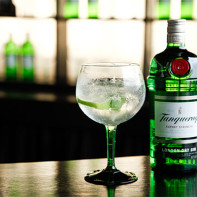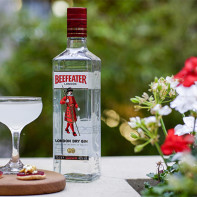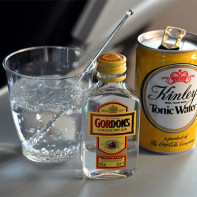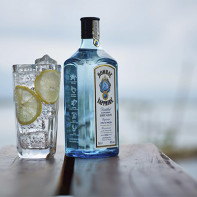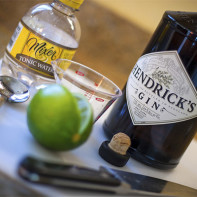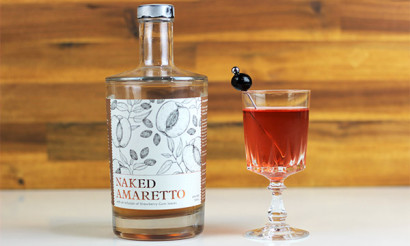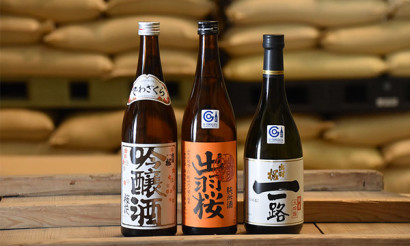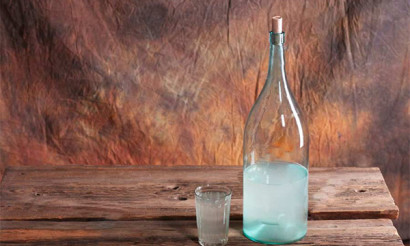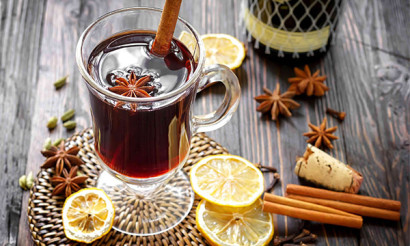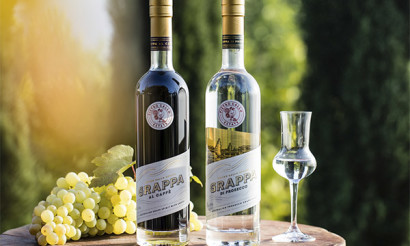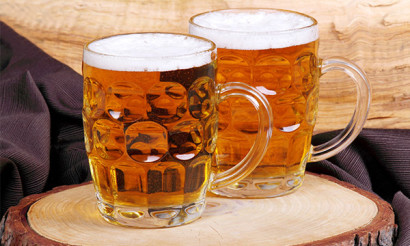How to drink gin properly
Gin or cocktails based on it became popular not so long ago. Because of its novelty, unique taste, rich aroma and exquisite appearance the drink finds its aesthetes every day. The strongest drink was invented in Holland, but it reached fame thanks to the British. The alcoholic drink is also called "juniper vodka."
- What is gin
- History
- How gin is made
- Ageing time of gin
- Variety
- Popular Brands
- Composition and calories
- Composition
- Why does gin smell so peculiar
- Strength
- Calorie
- How to drink gin correctly
- Ground rules
- How to drink gin
- What to drink with
- With an hors d'oeuvre
- Can we drink it straight
- Gin Cocktails: Recipes
- Gin Tonic
- "Beefeater Negroni
- Dry Martini
- "Singapore Loop"
- "Kiss of the Rose."
- "Tropical Gin."
- "White Jack."
- "Blue Lady."
- The benefits and harms of gin
- Benefits
- Harm
- What's important to know about gin and tonic
The expression "gin" comes from France, from the word "genievre" - heather, juniper berries. The Dutch reworked it into "genever" and the British shortened it to "gin."
What is gin
Genever (gin) is an alcoholic beverage with a strength of at least 37.5%. It is made by settling alcohol from wheat and other aromatic ingredients. It can be coriander, lemon or orange peel, violet root, hazelnut. Rosemary, juniper and tea tree berries, dudgeon, nutmeg, cinnamon, cardamom, licorice, cava-cava herb and other ingredients are also usually included. Sometimes barley distillate is used instead of wheat distillate: pure or corn and rye are added.
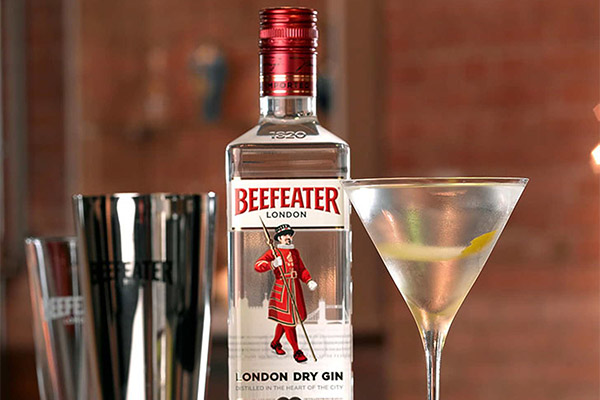
History
Gin is considered an apothecary alcoholic beverage. The Dutch doctor Franciscus Sylvius in the 16th century intended to invent a potion to improve the digestive system, but the infusion of alcohol from juniper berries was much tastier than the strong drinks of the time.
Some believe that the British stole genever from the Dutch when the war was going on. Others say that William of Orange, who came to the English throne, brought it with him. Since British laws at the time allowed the sale of liquor, gin became one of the cheap temptations, causing mass drunkenness among the population. British journals wrote of cases of living people catching fire after being impregnated with this liquor.
The year 1630 in London was famous for the amount of gin sales. Practically every fourth house was engaged in the liquor trade. In 1736 the government decided to increase sales taxes in order to reduce consumption and the ability to sell gin. But such measures caused the construction of underground places. Then in 1752 there was an act of sales licensing, which at least brought some order.
A more civilized and legal way of selling alcohol only at the end of the last century made the drink an image. It was only then that gin production began to develop.
How gin is made
The technology of making the tart drink is not too hard or complicated. To make a gin, you need water, alcohol, and aromatic spices. Gin can be prepared in two ways.
- First, the alcohol solution is diluted with water so that it is not too strong. Then it is transferred to a special apparatus for distillation and various aromatic herbs are added. It can be distilled from one to three times. It all depends on the kinds of herbal elements that are added there.
- The second way of making gin: a mixture of spirits, water and herbs is placed in an oak barrel container and infused.
The first way of making gin is prepared by the British, the second is used by the Dutch. But this does not mean that the drink is prepared only in these states. Technologies are used all over the world.
Aging time for a gin.
Dutch gin must be matured. Depending on the fermentation time, alcoholic gins are divided into 3 types:
- Jonge - very young and very penny-perfect.
- Old - medium fermentation time. Fermented for more than one winter and more than one summer in oak barrels. It has a yellow coloration.
- The oldest. Probably one of the most expensive of all kinds of gins. Sometimes it is bottled in ceramic bottles. The most popular brands are Bols, Bokma and De Cooper.
Of the British varieties (not including yellow jenever) only Sigre in Extra Dry is aged in oak barrels for three months, other brands do not use this technological stage.
Varieties
If we talk about the types of gin, we should start with the history. The inventor came up with the drink, which to this day is made by distilling barley malt. He mixed it with heather and aged it in oak barrels. However, this drink is not quite similar to true gin, although it was the premise for its discovery.
The British Old Tom gin was the central title between the Janiver drink and modern gin. It was made without vertical distillation, so the taste and concentration were inferior to the current one. Sugar was added to the alcoholic drink "Old Tom". Modern technology, various techniques make it possible to produce an elegant drink, with an exquisite smell and taste.
The variety of gins depends on the technological methods of production. A distinction is made between Dutch and English booze, which are also divided into several types.
There are three kinds of British gin:
- Dry London.
- Plymouth.
- Yellow.
The first type of gin, also called dry gin, in English is London Dry Gin. It appeared with the emergence of vertical distillation. The drink is absolutely sugar-free, has a cold, "metallic" flavor. This alcoholic beverage can be classified as a high quality gin. The concentration of strength is 40-47°.
Plymouth Gin is produced only in Devonshire. By technology of production it is a little bit similar to draught gin. Concentration of strength of the drink depends on the amount of distilled water. It has a floral aroma, a mild aftertaste.
Yellow Gin is a very rare drink. In translation into English - Yellow Gin. The difference from previous tinctures: it is aged in sherry oak barrels, just like in the good old days. Due to this, the drink has a yellowish color and a strength of 39-45°.
There are also several varieties of Dutch gin. They differ from British gins in that they are aged in large barrels. These include:
- Jenever (Jonge). It is a traditional drink of the Netherlands and Belgium. The strength is 30-48°. This is the newest kind of tincture and at the same time inexpensive. It is prepared on the spirit malt. Juniper berries and other spices are added.
- Old Gin (Oude). Oude denotes long aging in casks. Has a golden color and medium strength.
- The oldest (Zeer Oude). A very old and most matured gin drink. Because of this it is considered the most expensive. Has a pleasant aroma and a straw color. Poured in clay bottles.
Popular Gin Brands
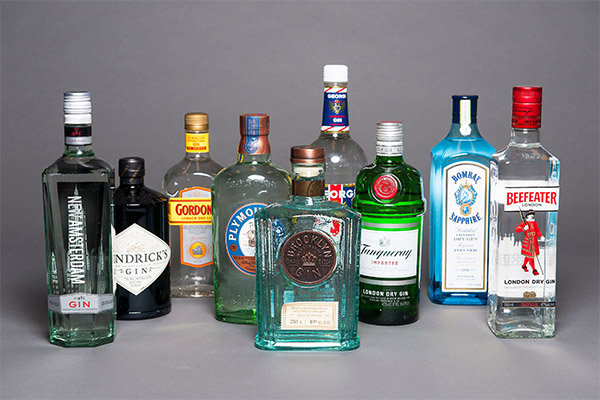
- "Beefeater. On a quiet street in the Kennington neighborhood today you can see the last London winery to produce a gin drink. The distillery is the only one in the English countryside. The Beefeater is made here according to a certain top-secret recipe technology invented by the ingenious pharmacist James Borrow. The pharmacist created a jenever that combines omnipotence and airiness. He named it Beefeater in honor of the guards of the Tower of London, thinking that they best represent the patriarchy of gin from London. The powerful and flavorful Beefeater includes 40 or 47% alcohol, depending on which state it's sold in.
- "Bombay Sapphire. The rich bouquet flavor of the gin is due to a special distillation method: the alcohol vapors are soaked in spice flavors. The impeccable transparency of the drink is determined by the use of water from Lake Vernui. This characteristic jenever is drunk "pure," as an impeccable base for martini cocktails or a slightly "lengthened" tonic. The percentage of alcohol is 47.
- "Seagram'S. Originated in 1857. It is filtered at a low temperature and aged in white oak barrels. In this way it preserves its wonderful aromatic power and a light golden amber tint which makes it stand out among other spirits. It is used in both low-alcohol "long-drinks" and very alcoholic "short-drinks". The alcoholic strength factor is 40%.
Composition and calories
Composition
This is the strongest drink. Naturally, the alcoholic core is the most important part of jenver. Wheat and barley spirits are often used. It is also made from corn, grape, potato bases and a mixture of rye and barley. Further, juniper berries are not unimportant and obligatory components. They give tartness to the drink, which distinguishes it from other alcoholic varieties.
In recent times, many people have experimented with this infusion and added ingredients that are not typical of it: aniseed, coriander, cinnamon, violet roots, angelica, cassia, grapes, almond nuts, coriander, liquorice and others. Lemon or orange zest is also often added as flavorings.
The drink contains no proteins, fats or carbohydrates. Therefore, the energy value is equal to 0.
Alcohol in gin is 39.7 g. Water - 60.3 g. There are also some vitamins: PP - 0,01 g., B1 - 0,01 g. Mineral substances: zinc and iron - 0,04 g., copper and manganese - 0,02 g., phosphor - 4 g., potassium - 2 g., sodium - 1 g.
Why does gin have such a specific smell?
Often, in addition to juniper berries are added from 6 to 20 herbal additives, each of which has a specific flavor. For example, the French gin "Citadel" has 15 additives. A multicomponent gin with 17 aromatic additives broke all records - this is a Dutch drink called "Damrak Amsterdam". Therefore, it is not surprising that many drinks not only have a specific smell, but also different color shades. For example, the shade of olive in the Dirty Olive gin. Kava kava and tea tree fruit are added to the Southern Gin drink, and its color comes out clear.
Strength
Gin has a high percentage of strength, approximately 45%, sometimes higher. Gin drinkers have learned to dilute it with soft drinks or just ice.
In ancient times gin was diluted with tinctures and decoctions of the cinquefoil tree. Because the bark of this plant contains acetylsalicylic acid, gin tonic did not cause headaches in the morning. Many alcoholic drinks in the form of vermouth, ale, vodka and others were made from this discovery.
Dry gin is popular now, while it used to be drunk semi-dry or semi-sweet. That is why many generic cocktails have been invented. It is difficult to consume it in its "pure" form, that is why for some time the makers tried to lower the percentage of strength to 10. But it is true, the generic was losing its appearance and taste. And in the twentieth century a law was passed which prohibited lowering the percentage of alcohol in the drink. Therefore, the strength should range from 37.5 to 47%.
The strongest gin is considered to be British Old Raj Cadenhead (46-55% alcohol) and Bell Gin (47.2% alcohol).
Caloric value
The caloric value of gin is about 275 kcal.
How to drink gin correctly
There is no special rule on how to drink different alcoholic beverages. However, gin is a very specific alcoholic drink. If you drink gin improperly, you can be left with an unpleasant aftertaste. Therefore, it is worth knowing how to drink gin, with what to drink and what to snack on, whether it can be consumed in "pure" form.
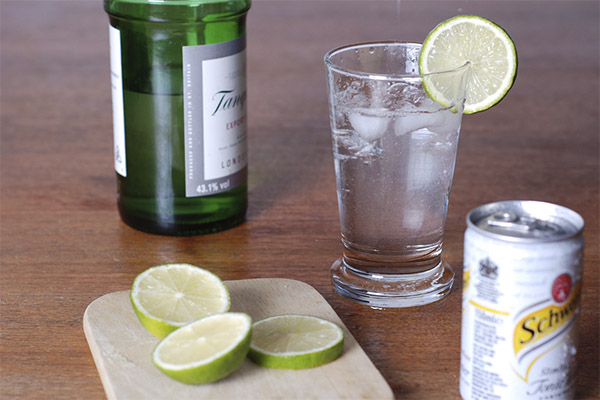
The main rules
First-rate gin is first-rate gin. It must be drunk with full honors. It is advisable to drink it chilled by placing it in the refrigerator for several hours before drinking. The optimal temperature is about 5 degrees.
It is correct to drink the tincture from small shots of up to 50 ml. The drink should not be savored, it should be drunk in a gulp. This way you will feel the real taste of the magic gin. Immediately it feels cold and fresh in the mouth. Then there is a burning sensation. To reduce it, it is recommended to add a slice of lemon in a shot.
How you can drink gin
The alcoholic drink is drunk in three methods:
- In "pure" form. Before the feast, it is cooled and drunk in a gulp.
- Diluted. Diluted with mineral water, coca-cola, juices.
- As part of cocktails. There are many cocktail drinks that include gin. Most often English gins are used to make cocktails, because Dutch gins are too strong.
What to drink with
Gin can be diluted with both alcoholic and non-alcoholic beverages.
Lovers dilute gin in different ways, here are a few options:
- Toss four bags of bergamot tea into a 0.7 bottle. Leave it for a couple of hours at 37 degrees. Then take all the packets out and drink the genie with ice or mix with a tonic. You can use chamomile tea, honey and squeezed lemon juice instead of bergamot in the same way.
- Mix jenever with cola 1:1, add ice to the glass.
- Adjusting to your taste, add lemon juice and a drop of sugar to the gin.
- Pour 50:50 grapefruit juice into the gin drink.
- Those who like the clean taste of gin can add non-carbonated water or, conversely, mineral water.
Gin combines with a variety of alcoholic beverages:
- Janever and champagne.
- Genève and vermouth 1:2.
Gin is used to make various cocktails. Therefore, it is combined with vodka, liqueurs, brandy.
What to snack on?
- Gin is an excellent accompaniment to a hearty meal. Often the British enjoy gin and sweet toast in the morning or have a gin cocktail with jam.
- Alcohol goes wonderfully well with baked goods, though that sounds strange.
- Cucumber perfectly masks the flavor of herbs, so often instead of fruit to decorate cocktails use this very vegetable.
- Very tasty gin with shrimp, dishes with them.
- An English traditional appetizer for gin is fried fish with potatoes.
- Dutch gin goes well with moldy cheeses.
- Belgians gin up with salmon, seafood, and hard cheeses.
- Also a good snack are olives, lime, marinated onions, cakes, dark chocolate, various sweets, pates with caviar.
Can you drink it in its pure form
Gin can be drunk in its "pure" form. The taste of gin is sometimes compared to the taste of a good collectible cognac. But caution should be exercised, because the drink may have a strength of 50° rather than 40°.
A glorious gin is bound to bring a bright frosty feeling ("cold as a metal object" - so they say about it in Britain). This serves as a counterbalance to the searing alcoholic effect.
The aroma of juniper berries should be brighter than the smell of other spices, but also not extinguish the hints of citrus, coriander, almond nuts and other herbal ingredients.
"Purest" gin should be drunk in one sip and preferably chilled, but ice cubes can be added. The pure alcoholic beverage cannot be drunk, only snacked with lemon, orange, olive, pickled onions.
Cocktails with gin: recipes
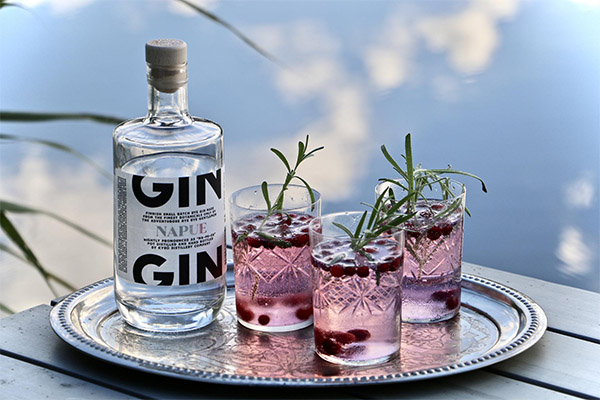
Gin tonic
This is one of the most famous cocktails. Even though it consists of only two ingredients, there is still debate as to what the ratio should be. To make a gin tonic, you need to pour 30 ml of gin into a glass with ice. Add 60 ml of tonic. Decorate the glass with a lime slice.
"Beefeater Negroni.
This cocktail was invented back in 1920 by an Italian. A slice of orange was considered the highlight of the drink. To make this cocktail, you need to mix 30 ml of gin "Beefeater" with 30 ml of sweet vermouth. Then add 30 ml of Campari bitter. Be sure to decorate your glass with an orange and add ice.
Dry Martini
This cocktail was invented in 1912 by a hotel bartender in New York. To make a dry martini, mix 55 ml of gin with 55 ml of vermouth "Martini Extra Dry" Add ice and a slice of lemon.
"Singapore Loop."
Invented in 1911-1915 by a bartender. To make this delicious cocktail, you need to mix 30 ml of gin with 10 ml of liqueur "Tripel Sec". Then add 10 ml of Benedict, 15 ml of cherry liqueur and 1 ml of Augustura bitter. Then pour in 120 ml of pineapple juice and 15 ml of lime juice. Garnish with a cocktail cherry, orange or pineapple slice. And, naturally, add ice.
"Kiss of the Rose.
Excellent Valentine's Day cocktail. Served with rose petals. Preparation is very easy. You need to mix 30 ml of gin, 10 ml of rose syrup and 30 ml of pomegranate juice. Squeeze some juice from a lemon and decorate your glass with rose petals.
"Tropical Gin.
Whisk 20 ml of gin, 20 ml of lemon juice, 10 ml of orange juice and 20 ml of mango juice in a shaker with ice. Strain into a glass, add 20 ml of soda water, stir gently, top with liqueur. Serve with a cocktail straw.
"White Jack".
To prepare the cocktail, whisk 50 ml of gin, 30 ml of lemon juice, 20 ml of Maraschino liqueur and 2 ml of Augustura bitter. Filter into a chilled cocktail goblet. Decorate with a slice of lemon.
"Blue Lady.
Place 20 ml of Blue Lady Liqueur in a shaker, then add 20 ml of gin, 20 ml of lemon juice and ice. Shake to taste. Pour the drink into a glass and garnish with a lemon. You can also make a sugar rim on the glass.
Gin Benefits and Harms
Benefits
Like all other alcoholic beverages, gin should not be consumed in large quantities. Only small doses of the drink will help cure or properly prevent.

Historical references claim that gin was created for medicinal purposes and had a diuretic effect. It was sold in drugstores. In India, gin tonic was used as a remedy for malaria. Now it is used for rubbing, to prevent colds.
- Recipe for bronchitis: to 2 tablespoons of gin add honey and a little juice from onions. Drink 1 tsp. three times a day.
- If you brew chamomile and mix it with gin (2 tbsp. In this case, you can use a mixture of 100 ml of flowers and 50 grams of gin, you will get an excellent expectorant that will help in bronchitis.
- You can make compresses for sciatica. Put the juice of white radish, onion and 2 tablespoons of gin on gauze, put it on the back and cover with polyethylene. So keep for 30 minutes. Then remove the gauze and wipe the area with a soft cloth with warm water.
- A similar compress helps with a sore throat. Only moisten the gauze with pure gin, put it to the painful place for 3 hours. Then the area should be smeared with a cream with a moisturizing effect.
- Decoction, which includes gin, will help cure swollen or red throat. You need to take an onion and place it in a saucepan. To it add 2 tbsp of sugar and 2 cups of water. All this boil until the onion is ready. Then add 50 ml of gin. This mixture to drink 1 tsp. during the day.
The harm
When generic use is systematic, cardiovascular disease and alcohol dependence can occur.
If a person has an intolerance to juniper berries, there is a possibility of allergies. It is forbidden to drink gin for people with kidney disease and hypertension.
Poor-quality gin or fake can cause harm to the human body up to and including death. Pay attention! If the gin is sweet - then it is of low quality, which can also indicate a fake.
What's important to know about gin and tonic
A real gin and tonic can only be made. It is forbidden to buy factory made gin-tonic. After all, it contains such components that slowly kill the human body. The carcinogens included in the ready-made drink destroy the internal organs. This drink is even banned in some countries. It contains quinine, which can cause malignant tumors.
Fact! One can of gin and tonic from the factory is equal to 5 cups of strong coffee, a few lumps of sugar, and 50 grams of medium quality vodka.
First, you can't store a mixture of alcohol and sugar in tin cans. Secondly, because of the processing of not only ethanol, but also sugar, the liver suffers greatly and the gastrointestinal tract is constantly irritated. These irritations end up with ulcers, gastritis, digestive disorders. If the body has at least one organ that suffers from alcohol, it is also reflected in the heart: the pulse jumps, increases blood pressure. This leads to tachycardia. Due to the disruption of blood rush, a person's brain activity decreases. Frequent consumption of canned gin and tonic causes brain cells to die off, and we all know what this leads to. Excessive accumulation of preservatives leads to allergic reactions: swelling, itching, peeling, reddening of the skin. Sometimes excessive consumption of this drink can lead to anaphylactic shock.
«Important: All information on this site is provided for informational purposes only. for your own health. Check with your health care professional before using any recommendations. health care professionals. Neither the editors nor the authors shall be liable for any possible harm caused by materials."

